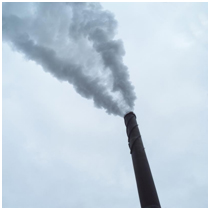- HOME
- Services
- Environmental Testing
- BTEX Testing Services
- Volatile Organic Compound (VOC) Testing
- Total Recoverable Petroleum Hydrocarbons Testing and Analysis
- Pesticide Testing and Analysis
- Polycyclic Aromatic Hydrocarbons Testing
- Hazardous Waste
- Wastewater Testing
- Soil Testing
- TCLP Testing
- SPLP Testing
- RCRA Metals TCLP Analysis
- Agriculture Testing Laboratory
- Brownfield Testing Laboratory
- Mineral Testing Laboratory
- Chemical Testing Laboratory
- Field Sampling
- Phoslab Environmental Consulting
- Resources
- About Us
- Contact Us
- PhosBlog
Call Us Toll Free! (863) 682-5897
Polycyclic Aromatic Hydrocarbons Testing
Phoslab Environmental Testing Services
 Polycyclic Aromatic Hydrocarbons (PAHs) is a category of hydrocarbons (mixtures of organic compounds containing only carbon and hydrogen) that are created during inefficient burning of coal, crude oil, fossil fuels, and garbage. Though naturally occurring, PAHs have been linked to environmental degradation and human health risks. As a result, PAH concentrations are regulated and PAH testing should be performed by an expert environmental testing laboratory.
Polycyclic Aromatic Hydrocarbons (PAHs) is a category of hydrocarbons (mixtures of organic compounds containing only carbon and hydrogen) that are created during inefficient burning of coal, crude oil, fossil fuels, and garbage. Though naturally occurring, PAHs have been linked to environmental degradation and human health risks. As a result, PAH concentrations are regulated and PAH testing should be performed by an expert environmental testing laboratory.
Phoslab Environmental Laboratories is an analytical laboratory offering a full range of environmental testing services. Using our state-of-the-art laboratory, we provide polycyclic aromatic hydrocarbons testing of air, water, soil, sediment, tissue, food, and industrial products.
What are PAHs?
PAH chemicals are released during the incomplete burning of fossil fuels. The less efficient the burning is, the more PAHs are released. Polycyclic aromatic hydrocarbons differ from monocyclic and bicyclic aromatic hydrocarbons in that they have multiple rings, giving them a strong structure that is unlikely to break down.
There are over 100 different organic compounds in the PAH category. They are found in air, water, soil, and products that have been charbroiled or contain coal tar derivatives. Because of their sturdy structure, PAHs linger, affecting the environment for months or even years. PAHs share characteristics such as high melting and boiling points. They also have low vapor pressure as well as very low water solubility.
The EPA has released a list of PAHs that have been singled out as presenting the greatest health risks for humans, including compounds such as:
- Acenaphthene
- Anthracene
- Benz[a]anthracene
- Benzo[a]pyrene
- Benzo[e]pyrene
- Chrysene
- Flouranthene
- Flourene
- Phenanthrene
- Pyrene
PAHs health risks
PAHs may cause both short- and long-term health hazards, including cancer.
Some of the serious polycyclic aromatic hydrocarbons health risks are:
- Impaired immunity
- Breathing problems, including asthma and lung damage
- Kidney damage
- Liver damage and jaundice
- Cardiovascular disease
- Cataracts
- Skin and eye irritation
- Breakdown of red blood cells
- Cancer
PAHs health effects are impacted by the length and amount of exposure. Everyday living can lead to exposure, which can come from breathing ambient air, eating contaminated food, and breathing smoke. Since PAHs do not dissipate, they remain in many common products like roasted coffee, cigarettes, shampoo and makeup (which contains coal tar).
Other everyday methods of exposure that can increase PAH health risks include backyard grilling, the use of wood burning stoves or fireplaces, and using cedar shavings rather than mothballs or deodorant products. Three PAHs – pyrene, benz[a]anthracene, and benz[a]pyrene – are found in three quarters of homes, and urban areas are tends to have PAH concentrations 10 times the concentration found in the country.
Polycyclic Aromatic Hydrocarbons Cancer
Studies link certain exposure of more than a dozen PAHs to the development of breast, lung, liver, skin, and digestive tract cancers. Some PAHs may lead to cell damage and mutation, inducing cancer. Other PAHs may not induce cancer but accelerate its progress.
As lipohilic compounds, some PAHs are specifically drawn to the fat tissues like that in the breast. Because the compounds do not break down easily, they remain stored in the tissue. Certain PAHs also weakly mimic estrogens to interfere with cellular receptors. Many studies link PAH to breast cancer, with occupational exposure leading to the greatest risk.
PAH Testing and Analysis
Phoslab Environmental offers PAH analysis of air, soil, water, sediment, tissue, and products. Our testing procedures incorporate techniques including gas chromatography and liquid chromatography.
Testing methods are selected to meet Florida’s petroleum cleanup standards and include:
- Liquids Samples – To measure concentration, PAH compounds are extracted from the liquid samples for analysis. Methods include solvent extraction techniques or the use of microwave techniques followed by gas chromatography.
- Solid Samples – Testing solid samples incorporates many of the techniques used in testing liquid samples. Tissue samples are homogenized based on project needs.
- Air Samples – Air samples are collected and analyzed with the use of high volume or low volume PUFs. The methods can be tailored to meet project requirements.
PAH regulations: EPA & FL DEP
The U.S. Environmental Protection Agency (EPA), as well as the European Union and other foreign government bodies, regulate the concentrations of PAHs. U.S. regulations determine acceptable PAH concentrations in the workplace as well as standards for acceptable PAH levels in drinking water. The Florida Department of Environmental Protection is charged with PAH compliance on the state level.
To be sold in some countries, products must also comply with PAH regulations. Therefore, PAH testing is recommended for hazardous waste sites, coal tar production plants, and businesses producing consumer products that contain coal tar. In order to stay compliant with both federal and Florida state PAH regulations, companies must have reliable knowledge of the PAH levels present in their workplace or products.
Phoslab Environmental has over 40 years of experience providing environmental testing laboratory services and is certified by the National Environmental Laboratory Accreditation Program.
Phoslab Environmental Laboratories is dedicated to meeting and exceeding the expectations of its clients. To learn how we can help with your PAH testing, contact us at (863) 292-6345.
Additional polycyclic aromatic hydrocarbons resources:
- Illinois Department of Public Health, Environmental Health Fact Sheet, http://www.idph.state.il.us/envhealth/factsheets/polycyclicaromatichydrocarbons.htm
- U.S. National Library of Medicine, National Institutes of Health, Polycyclic Aromatic Hydrocarbons and digestive tract cancers – a perspective, http://www.ncbi.nlm.nih.gov/pmc/articles/PMC3247201/
- Agency for Toxic Substances & Disease Registry, Polycyclic Aromatic Hydrocarbons (PAHs), http://www.atsdr.cdc.gov/substances/toxsubstance.asp?toxid=25
- State of Florida, Petroleum Cleanup Guidance Document #7, http://www.dep.state.fl.us/waste/quick_topics/publications/pss/pcp/site/guidance7.pdf
- Polycyclic Aromatic Hydrocarbons Testing Details Page, http://phoslab.com/pah/polycyclic-aromatic-hydrocarbon-testing/
